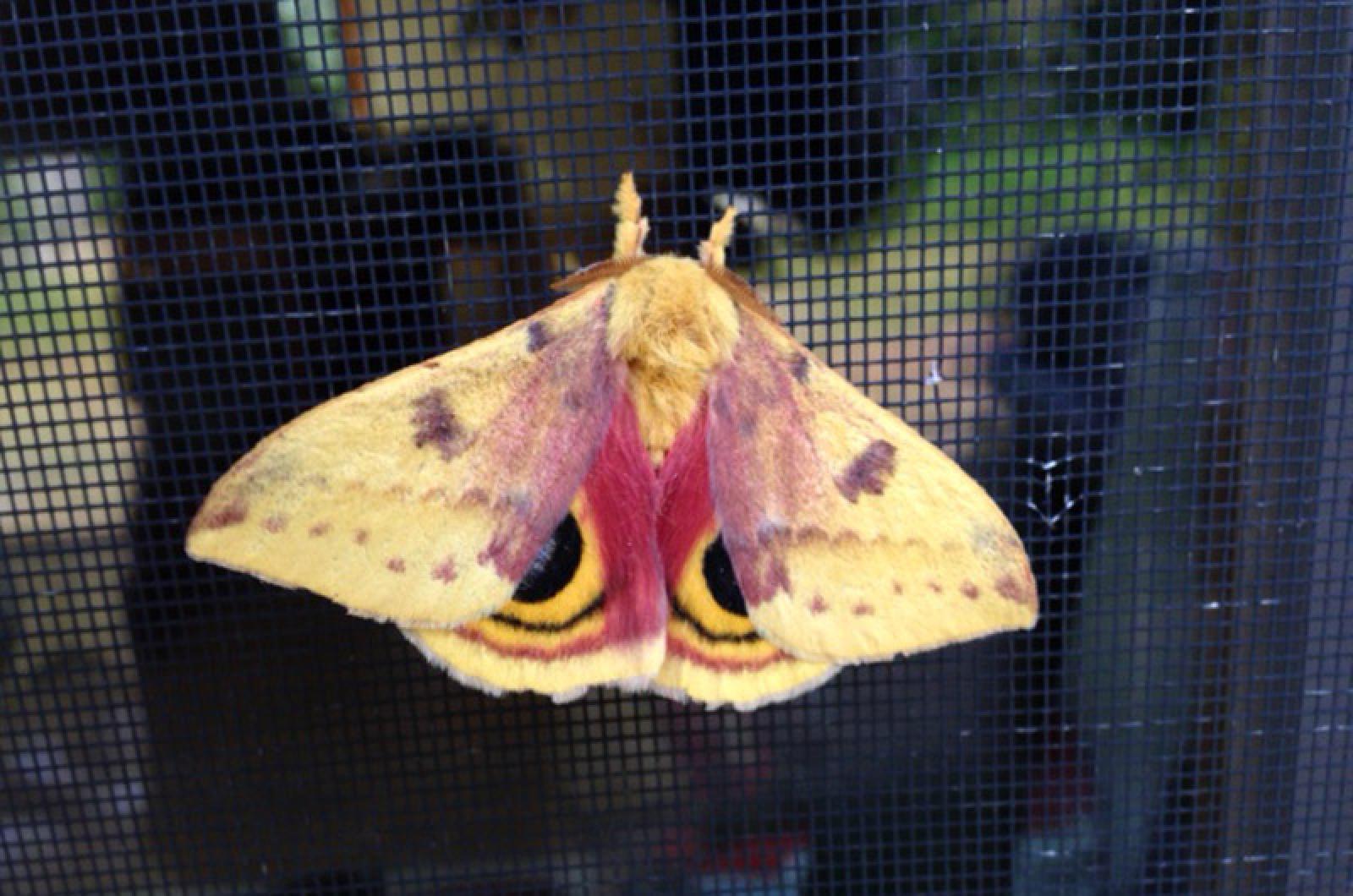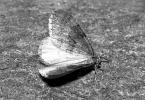Estella, a Charles Dickens character in Great Expectations, was not an insect enthusiast. She lumped moths into the category of “all sorts of ugly creatures that hover about a lighted candle.”
Though she was likely preoccupied with her own nightlife, she dissed the more fanciful creatures of the darkness.
Moths are more than just small brown bugs that eat your clothes. A great variety of these insects show color, style and habits that far exceed the excitement of Estella’s most wild night.
A porch light mistakenly left on all night yielded a morning of moth madness on my screen door. A multitude of moths, both large and small, presented a feast for my eyes and likely a breakfast for the birds.
One type of moth, the Io, in particular, caught my eye, due to the large imitation eyespots looking back at me from its hind wings. The Io moth also stood out from the others because of its size and coloration.
The eyespots serve as protection against predation, since they resemble a set of mammal eyes. All it takes is a second’s hesitation on a predator’s part to give this moth an edge, and a chance to escape that other moths miss out on. There are some predators, though, that aren’t so easily fooled, or learn to see through the trick, including birds, mammals, spiders and some other insects, which will eat both the moth and the caterpillar stages of this insect.
At up to three and a half inches in length, the Io moth is living large. Its bright yellow body pigment was not only bold against the siding of my house, but signaled its gender. Male Io moths are usually yellow to brown, while the females are red. Other clues to this moth’s sex include the male’s bigger antennae, which help them better detect a female’s pheromones (chemical scents).
The Io moth was named for the Greek goddess Io, who was the first priestess of Hera. Hera, the wife of Zeus, was always jealous of her husband, and with good reason: he was notorious for the taking of mistresses. In his usual fashion, he seduced Io, and when Hera became angry, he turned Io into a heifer, which Hera condemned to be tortured by flies for all eternity.
The authority on Roman and Greek mythology, Edith Hamilton, reports that the Roman poet Ovid wrote about Io at this stage as: “A beast, a starving beast, That frenzied runs with clumsy leaps and bounds.” This is also an appropriate description of this particular moth’s flight.
Moreover, Zeus initially had tried to hide Io from his jealous wife “by wrapping the earth in a cloud so thick and dark that a sudden night seemed to drive the clear daylight away,” an even more apt description of the moth’s nocturnal habitat.
Perhaps there is a connection between the name of this moth and the irritation that Hera inflicted on poor Io. In the caterpillar stage, the Io can cause a rash and itching because of a toxin in its venomous spines. Though the caterpillars are attractive, starting out orange and turning green with red and white stripes, they can cause irritation when touched. You can’t miss these bristly beasts since they are known to crawl en masse in a straight line, one after the other, across leaves or on the ground.
As adult moths, their lives are short, with Ios lasting only a few weeks. And in that time, they don’t eat, functioning only to reproduce and lay eggs to accommodate another generation. In fact, adult Io moths don’t even have a true mouth. But during the caterpillar stage they make up for their later fast, even eating the eggshells from which they emerged.
Though formerly abundant, these moths seem to be on the decline in New England. Luckily, the Cape and Island’s population has remained strong. The fact of their decreasing abundance, though very unfortunate, would nary have moved Estella. She was exceptionally self-absorbed, preferring to focus on her distress. Her disdain sharply contrasts with my appreciation of those magnificent moths fluttering nighty around the lights.
Suzan Bellincampi is director of the Felix Neck Wildlife Sanctuary in Edgartown, and author of Martha’s Vineyard: A Field Guide to Island Nature.








Comments (1)
Comments
Comment policy »